Cine film transfer
Documentary archive 8mm film Kodak
Archive 8mm film and 16mm cine film for a documentary of the London Docks.
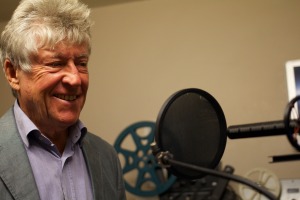
8mm film archive voice over
Des Cox of Snowbow productions commissioned us to produce a documentary about the London Docks in the 1960’s and 1970’s.
Des had collected a huge amount of 8mm and 16mm cine film showing the London docks at there height. The footage included a lot of the ships that Des used to work on during his days in the Merchant Navy.
Archive 8mm film conversion to digital video.
First port of call was to transfer 8mm film and 16mm film to a digital video format for editing purposes.
All the 8mm and 16mm film was cleaned prior to cine conversion to HD video.
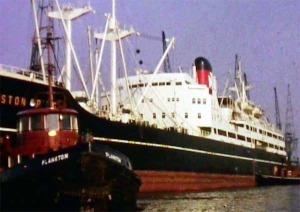
The video codec we decided on to archive 8mm film was Apple Pro Res 720p using a very low compression for picture quality and ease of compositing the final footage.
HD video editing service.
Editing the 8mm.
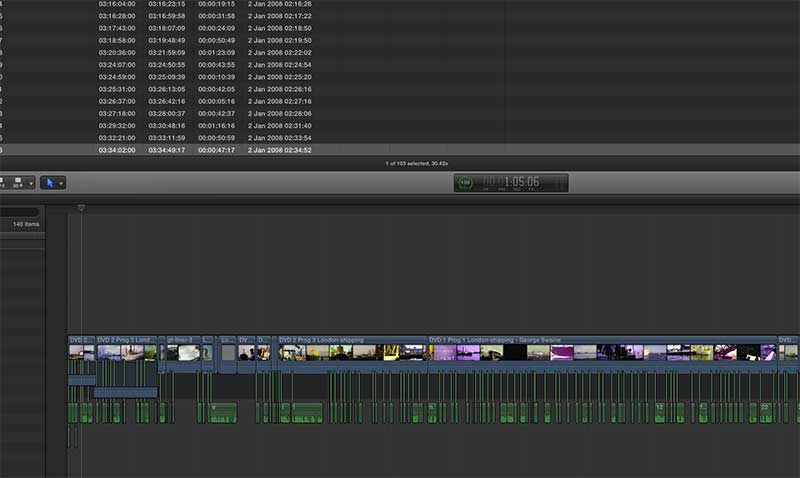
Picture above of FCP X screen the green sections on the time line are the audio clips.
Editing the 8mm and 16mm cine film was a lengthy process involved identifying the correct merchant ships and the correct parts of the Old London docks. The length of time that each ship appear on screen was crucial because it had to match in with the timings for the voice over which was to be layer down at a later stage in the video editing.
Archive 8mm film. Voice over.
The voice over was very complexed because the final programme is a hour long. Des was the voice over artist due to his acting experience and his fantastic knowledge of British ports and Merchant shipping. We recorded Des’s voice using a Sennheiser ME-66 shotgun microphone which is an industry standard microphone for video production. This was then recorded onto a Zoom H4n digital recorder at 48 k quality.
Archive 8mm film. Keeping it synchronised.
During the voice over Des was shown the edited video without the sound but timecode running at the bottom of the screen. This helped Des to know exactly where the voice came in to the pictures on the screen.. Adobe Premier CC was used for the timecode because it has superior timecode facilities compared with Final Cut X.
Video camera crew shoot Canon 5D mark 11 Sussex
Video camera crew shoot Canon 5D mark 11 Sussex.
The Shoot.
I was asked to take part in a Video Camera crew shoot in Sussex at the Six Bells pub in Chiddingly Sussex by Rupert Cobb of Gun Hill Studios.
Details of the video camera crew shoot.
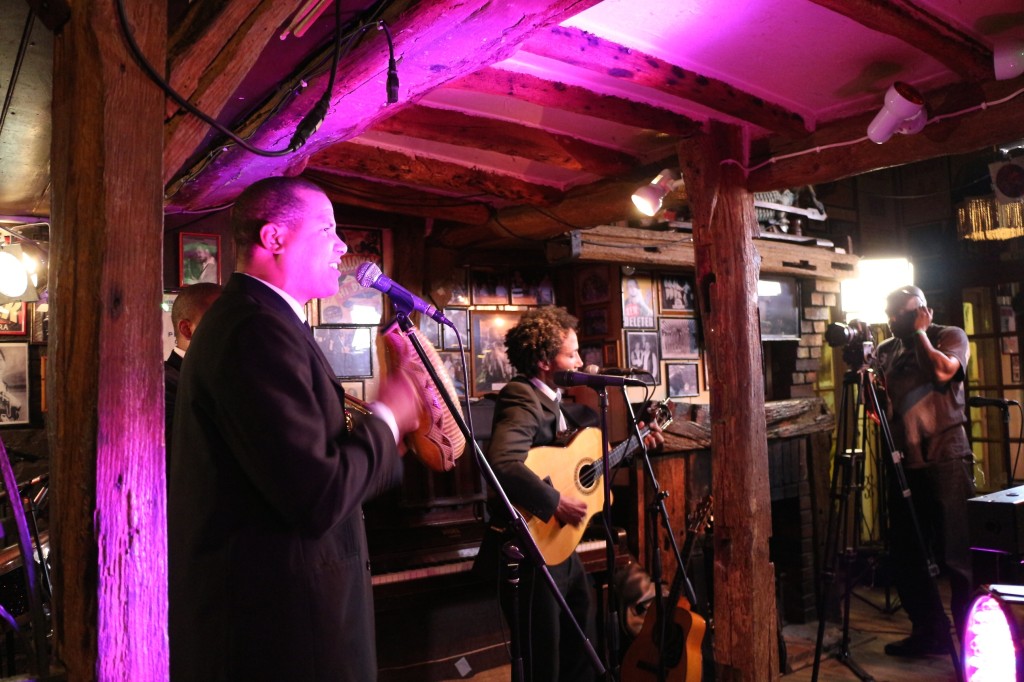
The shoot consisted of 4 x Canon 5D cameras shooting from various angles. Space was cramped and it was filmed during a live gig.
The shoot started at 9pm and went onto 11.30 pm. I personally shot around 30 gig of video with 2 battery changes and 3 Memory card swaps. Once the memory cards were full they were downloaded to an Apple Laptop, then wiped to be used again.
Sound
All sound was recorded separately through a mixing desk into an Apple laptop.
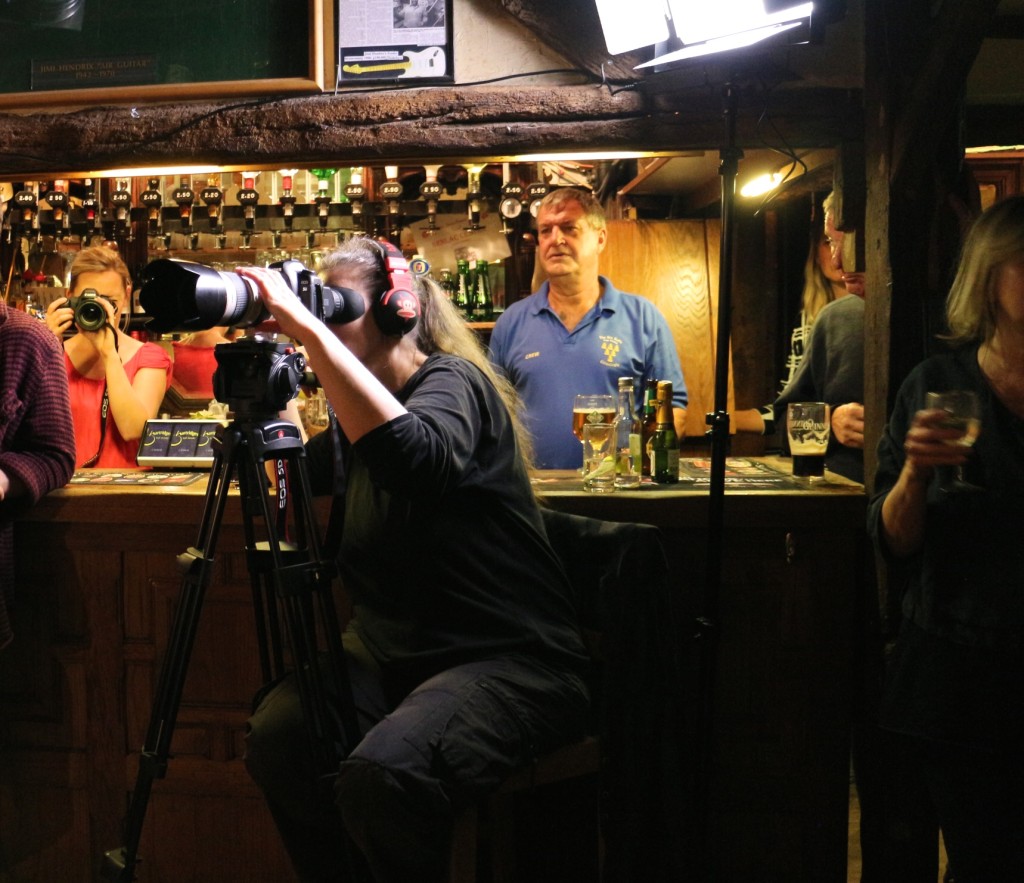
Canon 5D.
After about 30 minutes of video shooting with the canon 5D did get quite hot this is due to the the camera not being a dedicated video camera.
Video camera crew. Andrea shooting Canon 5D with 70-200mm lens.
Canon M
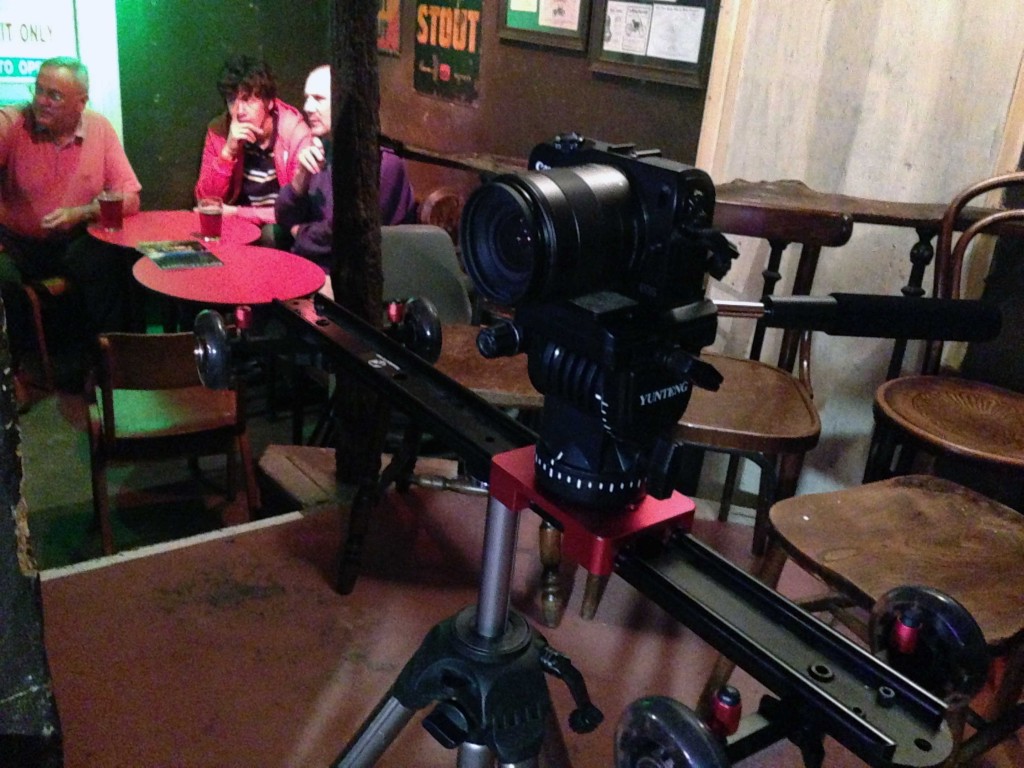
As well as taking the Canon 5D. I packed the Canon M camera which has the same sensor as the canon 650D and shoots 1080P video. Once placed on a slider behind the band this provided some excellent moving shots.
Video Cameras. As well as shooting on the Canon 5 D we also use the Canon XF100 which can record at 50 Mega Bits per second at 4:2:2 colour space for broadcast video production.
Excellent link covering all aspects of video camera areas of shooting HD video with the Canon 5D http://www.cinema5d.com
Eastbourne pier fire Sussex uk
 Eastbourne Pier Fire.
Eastbourne Pier Fire.
Today we received a phone call from a German News agency asking us to film the Eastbourne pier fire. As we are based in Seaford which is 9 miles from the Eastbourne Pier fire we had to get a move on.
It was around 5 pm when we received the call about the Eastbourne pier fire so the pier fire had been subdued since it began at around 3pm on the 30th of july 2014.
The Kit
The kit that i packed was a Canon 5D with Manfrotto tripod and 70-200 f2.8 zoom lens with IS.
Arrival.
When I arrived the smoke coming from the fire was still quite intense. Parking by the Wish Tower in Eastbourne gave me a prime view of the Eastbourne pier fire but I needed to get closer shots.
Closer to the action.
Walking further up towards the pier fire and climbing up a bank to I could shoot over peoples heads got me in closer to the action. Some of the footage had to be shot with the tripod acting as a monopod due to lack of setup time and very uneven ground. When shooting on 200m zoom this can be very difficult.
Edit.
Once home the footage was loaded as Pro-Res 422 into FCP X and the brief was to have shots longer than 4 seconds and they had to be static with no zooms or pans and the whole sequence wasn’t to be longer than 2 minutes. The good thing about FCP X is that its fast and time was of the essence.
Upload.
Once the footage was edited its was converted to H.264 format ( file size was around 180mb) and we uploaded it to wetransfer.com the upload details where provided by the Company in Germany.
The finished footage of the Eastbourne pier fire can be viewed at RUPTLY TV. Please find a link here to our Video camera crew UK service.